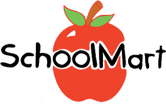5 Tips for Using Technology to Improve Online Education
While many schools have finally been able to bring educators and students back into the building, there is no denying that elements of online education are here to stay. Some teachers are using hybrid or blended learning models, while others are still using distance learning. Whatever model you’ve chosen, if you have online elements, it’s important to focus on strategies that will enhance the experience for students. Check out the tips below prepared by the experts at SchoolMart on ways to improve your online classroom.
Keep It Simple
With the number of online edtech platforms and resources, teachers may feel the inclination to use as many as possible all at once. It can be difficult to choose between resources that may offer different tools or features or decide which should be incorporated.
Try not to use too many tools just for the sake of using them. Instead, ignore the technology options available, and brainstorm clear learning goals that focus on what you want to achieve in your classroom. These goals might be for them (“Students need more opportunities to practice their math skills”) or for you (“I want to offer students quality feedback on their work”). Once these goals are set, you can begin to look for tools that will help you to best meet your needs. There will still be a variety of options, but you will be able to refine the list to fit what you’re looking for. For more ideas on setting goals and choosing the proper edtech to meet them, check out this guide from the SchoolMart team.
After you’ve narrowed it down to the tools that will best serve your class, be sure to bring that simplicity to the process of using these resources. With online learning, all instruction should be as easy to access as possible for students and teachers. This doesn’t mean that the assignments themselves should be easy — they should just be technologically simple to navigate while displaying the depth of knowledge required.
Foster Collaboration
Allowing chances for students to work in pairs or groups during class is crucial for development, and it doesn’t need to be eliminated in online classrooms. Luckily, there are lots of resources that allow students to work together across a variety of mediums and on different tasks. Platforms such as Zoom, Microsoft Teams, and Google Meet function as virtual meeting rooms and are great for a large group, small group, or partner work.
For actual projects and tasks, platforms like MindMeister allow students to collaborate with one another on visualizing ideas and making mind maps. JamBoard, a digital whiteboard, is designed specifically for collaboration. Google Slides add-on PearDeck lets teachers work together to create content, add audio and gifs, and add engagement components to their lessons. There are countless resources for collaboration among peers, between students and teachers, and among faculty. Try a few out and see which you think work best!
Be Authentic
Online learning is at its best when students feel connected to their classmates, their environment, and most of all, their teachers. You know better than anyone exactly which aspects of your teaching are your strengths, and being true to yourself is the best way to make your online classroom a successful one. Don’t sacrifice those talents in the online classroom — make them work for your new environment in a way that feels right for you!
As important as it is to be true to yourself, it’s good to be authentic to your students as well. Use approaches that serve you well and keep things fun, while keeping the interests of your students in mind. If you have the idea to try something new that they’ll connect with, even if it is different from what’s normally done, give it a try! Capturing your students’ interests in ways that feel right to you is the most important thing, so whatever digital tools and edtech allow you to do that are what you should be using. Trust yourself and your students, make sure your classroom feels authentic, and success is inevitable.
Make Lessons Interactive and Accessible
When lessons are interactive and accessible, it builds a collaborative culture, keeps students engaged, and develops for student autonomy. Student engagement platforms like Nearpod, Blooket, Presence, and Orah, among others, capture individual inputs from each student and make lessons interactive with or without a facilitator. Teachers can initiate student-paced mode to monitor the completion of student work, and set participation exercises to be real-time or self-paced. These tools can be used to fit the needs and structures of all age groups and grades. Some of the platforms will also generate data about how well the content is being learned and understood, which educators can use as they develop and revise lesson plans. By keeping resources accessible for you and your students, collaboration and engagement will improve, and everyone will benefit.
Have Fun
The incorporation of edtech into the online classroom can feel overwhelming or tedious at first. With the volume and variety of options available, it isn’t always easy for educators to find the tools they want, and some might choose to avoid them altogether. However, digital resources can be an amazing way to have some fun in the classroom. Programs like Gimkit, Kahoot, and Prodigy offer game and game-show features for students to practice skills while competing. Other websites, like Storybird and Anchor are great ways for kids to get creative and work together. Just as it’s important to be authentic, your students and classroom will thrive as a result of the incorporation of fun, entertaining elements.
Contact SchoolMart
Incorporating new edtech into the online classroom can be exciting, but it can be overwhelming too. Want to talk about your options? Reach out to our team of edtech pros! We’re ready to help you with setting learning goals, choosing tools, and implementing resources. For more information, call 1-800-285-2662 or contact us here.
